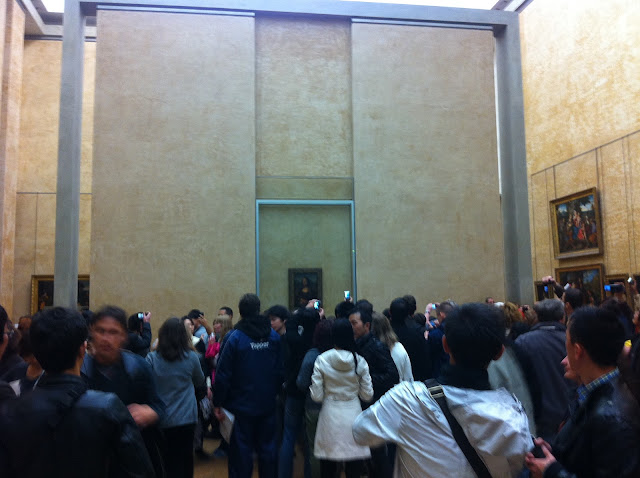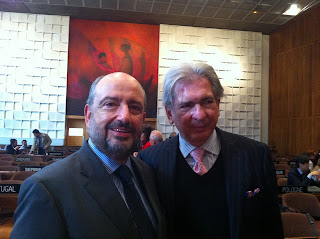Sunday, March 20, 2011 -  Napoleon,Veronese
Napoleon,Veronese
 No comments
No comments
 Napoleon,Veronese
Napoleon,Veronese
 No comments
No comments
Art Theft History: Judge Arthur Tompkins Writes about Veronese's "The Wedding at Cana"
by Judge Arthur Tompkins
The recent reference in the ARCA Blog to the oft-overlooked Wedding at Cana, hanging opposite the Mona Lisa in the Louvre, triggered the recollection that this monumental painting, the largest hanging in the Louvre, is also the largest plundered painting on public display, either in the Louvre, or, probably, anywhere.
Veronese, The Wedding at Cana
http://en.wikipedia.org/wiki/File:Paolo_Veronese,_The_Wedding_at_Cana.JPG
Originally painted, over about 15 months beginning in 1562, by the late-Renaissance Italian mannerist Paolo Veronese, it was completed in 1563 when the artist was aged 35. It was specifically painted for, and hung in, the refectory of the Benedictine Monastery of San Giorgio Maggiore, on a small island off the entrance to Venice’s Grand Canal. It was so famous, in its original location, that at the beginning of the 18th century, the monks of the Monastery began restricting entry to visitors who wished to see it . There it hung for 235 years.
The Refectory, Monastery of San Giorgio Maggiore
http://www.factum-arte.com/eng/conservacion/cana/Default.asp
In the early summer of 1797 Napoleon, fresh from the looting (by forced treaty) of Modena, Parma, Milan and the “incomparable treasure house” of Rome, turned his attention to Venice. He did not stage a frontal attack, but rather engineered the rebellion of a number of the city-state’s vassal states and then, following a year of negotiations, on Friday 12 May 1797, the Venetian Grand Council voted itself into extinction. Thus ended an unbroken 1070 years of proud independence.
Four days later the Treaty of Milan was signed, which allowed the French to remove Venice’s artistic treasures. The Treaty of Campo Formio in October 1797 ultimately divided Venice and its territories between France and Austria. But the Austrians were slow to arrive to take control of their prize, and did not arrive until January 1798. In the intervening period, the French plundered the city, including the Four Horses of San Marco (returned in 1815 after a short spell adorning the Tuileries), and the Veronese.
The painting is vast. It measures 33’6” across, and is 22’ high. In its elaborate frame, it weighs over 1 ½ tons. It was cut into pieces to allow for transportation to Paris, and there reassembled. The Louvre website simply states that the painting “Entered the Louvre in 1798”, and gives no further clue as to the manner of its arrival.
Although the Venetians claimed the painting after the Congress of Vienna in 1815, in the end the French were able to send a substitute - Charles Le Brun’s “Feast in the House of Simon” – back to Venice in its place.
Its long sojourn in Paris has not been without incident. Napoleon married Marie-Louise of Austria in the Louvre’s refurbished Great Gallery in 1810. About 6,000 guests were expected to attend the wedding, and one commentator described the preparations:
“ … there was a tremendous scurry to rearrange pictures and furniture in order to accommodate the 6000 people expected. The size of the Marriage at Cana was an embarrassment. ‘Since it cannot be moved – burn it’, was Napoleon’s soldierly decision – one which, fortunately, [Baron Dominique Vivant] Denon ignored.”
During the Franco-Prussian War in 1870-1871, it was stored in a box in Brest, and during World War II it was rolled and trucked around France to avoid capture by the Nazis. Then at the end of a controversial three-year cleaning in begun in the late 1980s, it was, in the space of a few days, sprayed by water from a leak during a rainstorm, and then dropped. The canvas was ripped in five places, including one tear four feet long.
In late summer 2007, after a meticulous process conducted under strenuous conditions over about 18 months , a full size digitally copied replica was reinstalled back into the refectory at San Giorgio Maggiore – salving but not healing the wound left by Napoleon 210 years before.
So, Veronese’s masterpiece hangs still across from La Joconde – bruised, battered, dismembered, stolen, drenched, torn, displaced, far from home, and, as 9 million visitors a year jostle for a view of the painting across the floor, often overlooked.
It deserves better.
Judge Arthur Tompkins of New Zealand is a graduate of Cambridge University and teaches "Art and War"at ARCA's program in Amelia.












